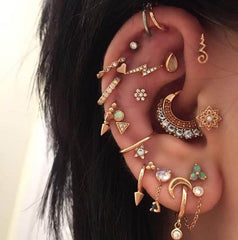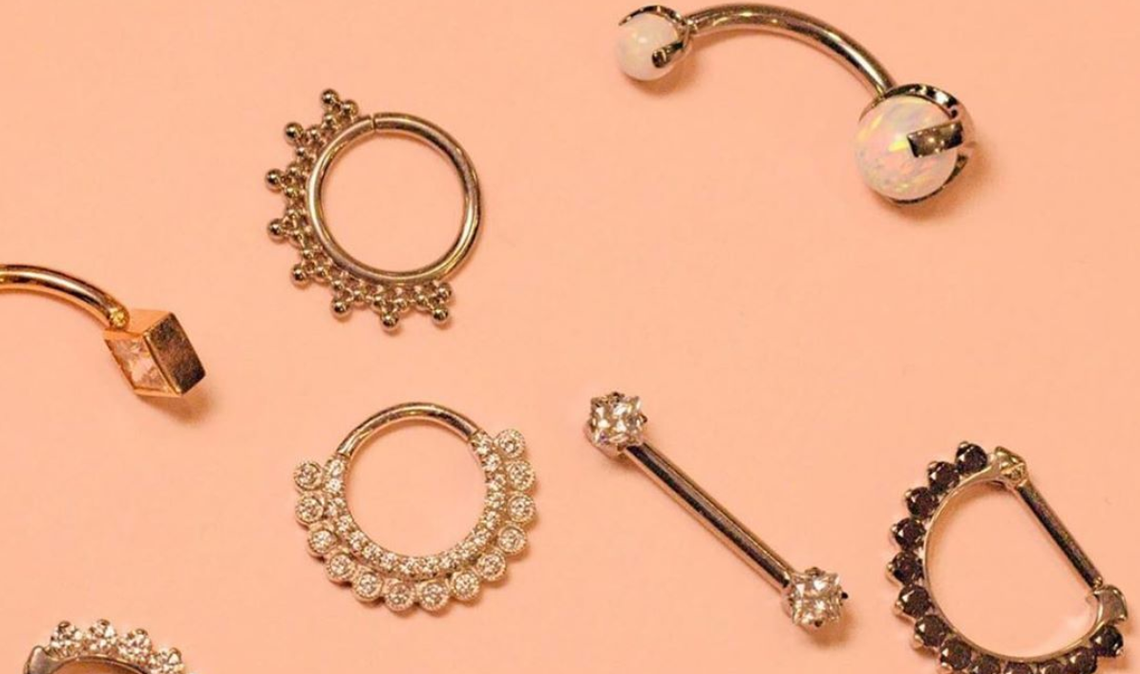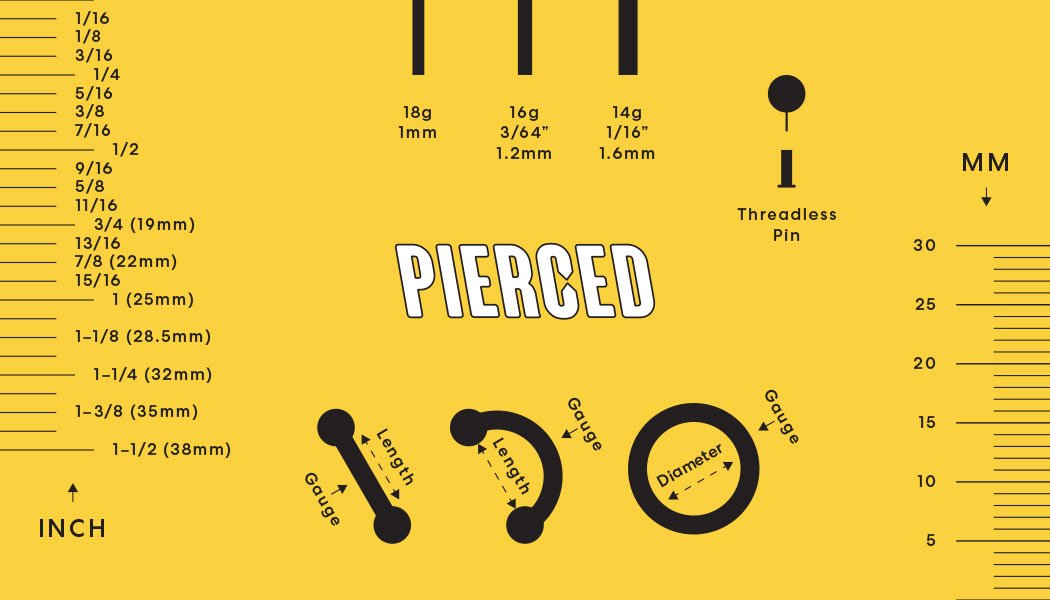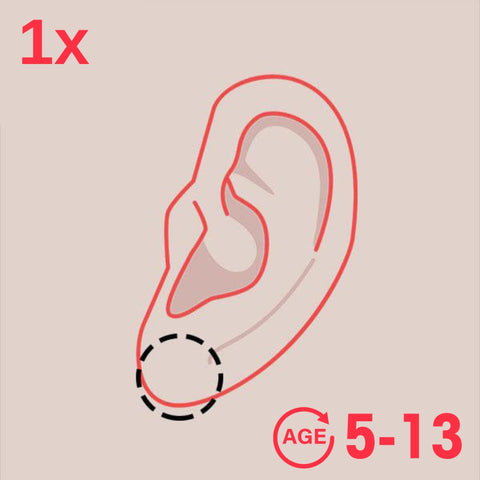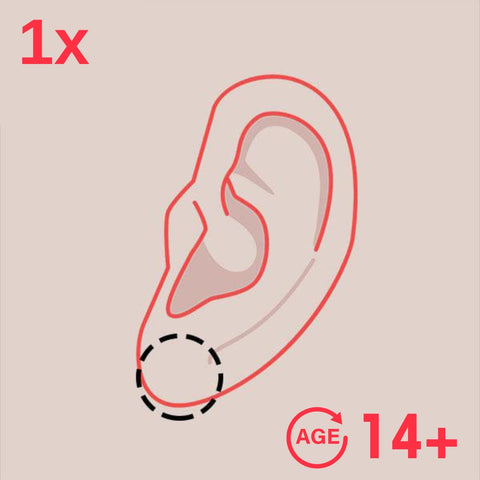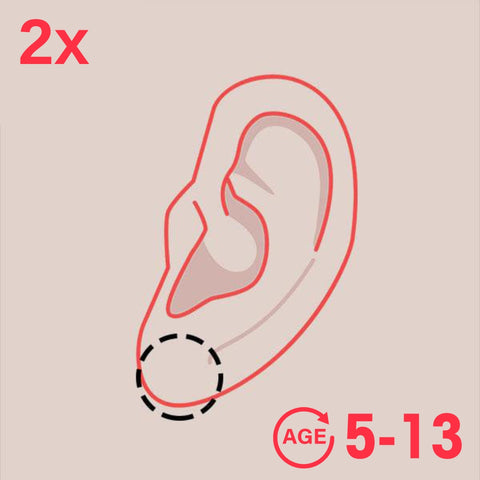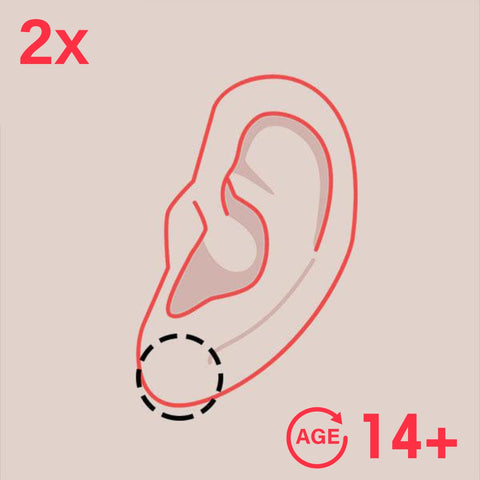The History of Body Piercing
Permanent body art such as tattoos and piercings have been around for literally thousands of years, all over the world. Across times, cultures, and people, body art has long been a determining factor in the aesthetic of many different demographics across continents. In fact, the oldest mummified body on record with a piercing was over 5000 years old.
In the recent past, body art has been seen as a taboo or otherwise unsightly aspect of culture left for vagrants and vagabonds, or people without any cultural value. Unfortunately, many areas of the modern world held this view for years.
Luckily, media and culture change over the decades, and people are starting to understand the appeal and dedication it takes to adorn themselves with permanent art. A new subset of culture has been created to showcase this aesthetic and an environment where interested individuals can find professional artists to do the work for them.
Modern Body Art and Contemporary Design
Even though it’s been around for thousands of years, modern body art hasn’t changed piercing much, aside from a few cultural significance's and technological advancements, things have remained mostly the same. Jewelry types and materials are now much safer, as well as the procedure itself.
What’s in Body Jewelry?
You’ll find many different types of metals used in body jewelry, all of which have their own unique advantages or disadvantages regarding skin allergies and cost. Choosing the right jewelry type for your piercing will work wonders in ensuring that you have a healthy time healing and an awesome look.
Gold
Gold has always been a traditionally popular metal used in piercing, as it is very allergenic friendly. However, gold is also obviously much more expensive than other metals. If you’re looking to get gold jewelry without breaking the bank, opt for karat weights that are less than 24k, which is solid gold.
Other metals will be used in place of gold with the lesser karats so that you get the look without so much of a monetary investment.

Titanium
Titanium has quickly become the go-to metal and alloy of choice for pretty much every type of body jewelry. It’s hypoallergenic as well as stylish, and relatively affordable when compared to more precious metals. If you aren’t sure about what metal to pick, definitely stick with titanium.
Alloy Metals
Silver and other metals aligned with alloy components help to make body jewelry cheaper than other alternatives that may be unsafe. These are mostly used for purely aesthetic purposes and can have allergy risks, so be sure that you know and understand the differences between them if you’re looking to get anything done.
A word of caution: never pierce yourself or use plastics during a procedure of any kind, as the type of hollow needle required to get through thicker cartilage also prevents the pushing of bacterial infections into the new space, as well as make any allergies you may have that much worse.
What parts of your body can you get pierced?
There are many different types of piercings all across the body, all of which carry their own unique aesthetic and jewelry designs. Choosing the place that you want to get pierced is easy, just be sure to know your pain tolerance and understand the post-procedure aftercare components before getting down to business.
Genital piercing
While it may be uncomfortable to talk about, plenty of people decide to pierce their genitals for one reason or another, most often to show off their pain tolerance or to just have something different from everyone else.
Culturally, many peoples have used genital piercings as a rite of passage into adulthood, as being able to deal with the pain of the piercing itself is similar to the changes that we experience after going through puberty into the real world.
Types of Genital Piercings
For women, genital piercing can involve areas of the vagina that are hidden from view and only seen in private situations. Some types are essentially lower naval piercings, all dependent on the choice of the wearer.
Men’s options include the traditionally recognized Prince Albert, which is a piercing that goes through the glans and frenulum of the penis.
The level of pain for a genital piercing is generally much higher than any other area of the body, so be sure to take this into account if you’re thinking of getting anything done. It’s also important to go with a professional to lessen any complications that can happen when dealing with these especially sensitive areas.
Oral piercing
Tongue piercings have always been very popular, and in recent years, especially among women. Fewer men have had oral piercings in general, unless you’re counting lip rings. Today, oral piercings of all kinds are seeing a resurgence among a new demographic of individuals who don’t necessarily want to show off their piercing 24/7, but instead have something that is much more personal.

Tongue Piercing
The tongue is probably one of the more popular and recognizable oral piercings, with a small stud or barbell typically standing in as jewelry. You should avoid scraping your teeth with your tongue piercing, as it can cause enamel wear and scratching.
The sensitive, blood-rich areas of the mouth make them an area that can be painful to pierce and carry a higher rate of complication or infection. If you’re thinking of getting any sort of oral piercing, sanitization and professional procedural techniques are of the utmost importance, so take note of this during the research process.
The Nose
If you want something more “in your face” regarding body piercing, the nose is a good place to start. Septum piercing is one of the most popular ways to do this, and involves piercing the center area of the nose, much like a bull ring.
You can also have just one piercing in a particular nostril, or even both for a much more unique look. The applications are nearly limitless and always exciting to try out.
In regards to pain, the nose is definitely different for everyone, more so than other parts of the body. Some people may have more sensitivity and thus experience more pain than others, or nothing really at all.

Ear Piercings
All of us are probably aware of how many people around the world, across genders and cultures, have their ears pierced. In America, many girls have their ears pierced as young as age five, and for many people, it’s the first and only piercing they ever get.
Just because it’s commonplace doesn’t mean that your ears don’t have fun aesthetic body art applications. In fact, since most jewelry is designed for use on or around the ears, you’ll find an even greater variety to choose from when you decide to look.

Tragus, Helix, and More
The prevalent cartilage that makes up the construction of your ear makes it uniquely suited for piercing. Some parts of the ear, like the tragus, have a thicker concentration of cartilage, which can make piercing them more uncomfortable than a simple earlobe piercing.
The helix, the upper, inner part of the ear, is also popular with those looking to have a wide variety of piercings. Since the cartilage here is thinner, the procedure isn’t as painful or uncomfortable.
Ear piercing doesn’t have to be boring, so take a look at some designs that might suit your own personal flair and flavor of body art.

How are body piercings done?
Modern advances in piercing technology have made the process much safer and less dangerous in terms of complications and infections. Most piercing artists will have had plenty of experience across all disciplines and understand the level of professionalism that is required when dealing with this procedure.
Tools of the trade
A hollow needle is used in order to puncture the areas to allow room for the desired jewelry type. The size and shape of the needle gauge can be changed to accommodate different tastes, which will be discussed with you by your artist before you get anything done.
Your artist will push the needle through the area you’ve selected, and then the jewelry you’re wearing follows. This way, there won’t be any extra space to scar up or cause infection.
Are Piercings Harmful to the Body?
Piercings are not inherently harmful to the body as long as the process is done correctly. The risk of complications and infections is mainly based on how well you keep the area clean after the piercing instead of any actual risk.
What are the Names of All the Popular Body Piercings?
Some of the more popular piercings today include the following:
- Conch, helix, and other parts of the ear
- Septum and nose piercings
- Naval/tummy piercings
- Snake bite/lip piercing
- Nipple piercings
Each one has its own unique advantages aesthetically as well as pain tolerance. Research into designs and jewelry types before deciding on which one to go with.
Why are Gun Piercings Bad?
While most young girls get their ears pierced with a piercing gun, new studies have shown that they are ineffective and can cause more issues than needle methods, even for the ear area.
Keloids, a dangerous development of scar tissue, can form when using a piercing gun on the ears. These are nonremovable growths that can cause severe pain and weight on the ear in severe cases, as well as infection if they are cut or scratched.
Pretty much every professional artist disavows guns these days, so be on the lookout if you or someone you know is thinking about using one during a piercing appointment. Hollow needles will always be safer and more effective than cheaper, plasticky guns.
Choosing a Shop
When you’re looking for an artist and a shop to go to, remember to check the cleanliness, sterilization techniques, and general customer service from everyone who works there. You should feel both welcomed and appreciated regardless of your request, and your artist should take the time to guide you through the process whether it’s your first piercing or one of many.
If you have any questions, be sure to ask your artist. You can take a look at their portfolio of pieces they have done in the past, which can also serve as inspiration for your own piercing or jewelry type. Take your time in doing this so that you know you’ll be getting something you can appreciate for years to come.

Pre-Piercing Checklist
Once you’ve found somewhere to go get pierced, there are a few things to keep in mind when booking your appointment.
In some areas, parental permission may be required for individuals under the age of 18 before getting a body piercing, as with most other adult decisions, and every shop will follow this to the letter.
As well as this, make sure that you’re wearing the appropriate clothing for the type of piercing you’re getting, so that you’re comfortable during the procedure and the artist has access to the spot.
Aftercare
Your piercings healing time will vary depending on not only the type of piercing, but also how well you take care of it and keep it clean. When you’re in the shower, use antibacterial soap, preferably something unscented during the initial days after the procedure.
Take care to look for potential signs of infection also, such as red streaks or severe pain that doesn’t go away after a few days. If this is the case, speak with your personal doctor about the next steps to take, as you may have a bacterial infection or severe allergy.
Before You Go
In the end, the single best thing you can do for yourself before getting piercing is to understand all the different types and areas of the body that can be utilized, as well as the metals found in the jewelry you expect to wear.
By researching everything beforehand, you’ll have a better, safer grasp on the piercing community, as well as a newfound respect for the type of body art that represents the ultimate in artistic expression.
Piercing Studios Near You
Mississauga
Square One Shopping Centre
100 City Centre Drive, Mississauga,
ON L5B 2C9
Phone
+1 (905) 232 -7226
Need an Experienced Piercer in Mississauga?
Working with an experienced piercer can make all the difference when it comes to your piercing experience. If you’re in the Mississauga, Ontario area and have any questions about ear piercing, body piercing or jewelry, give us a call or stop by our piercings studio today. We’d love to help walk you through what to expect and help you choose the right option.

